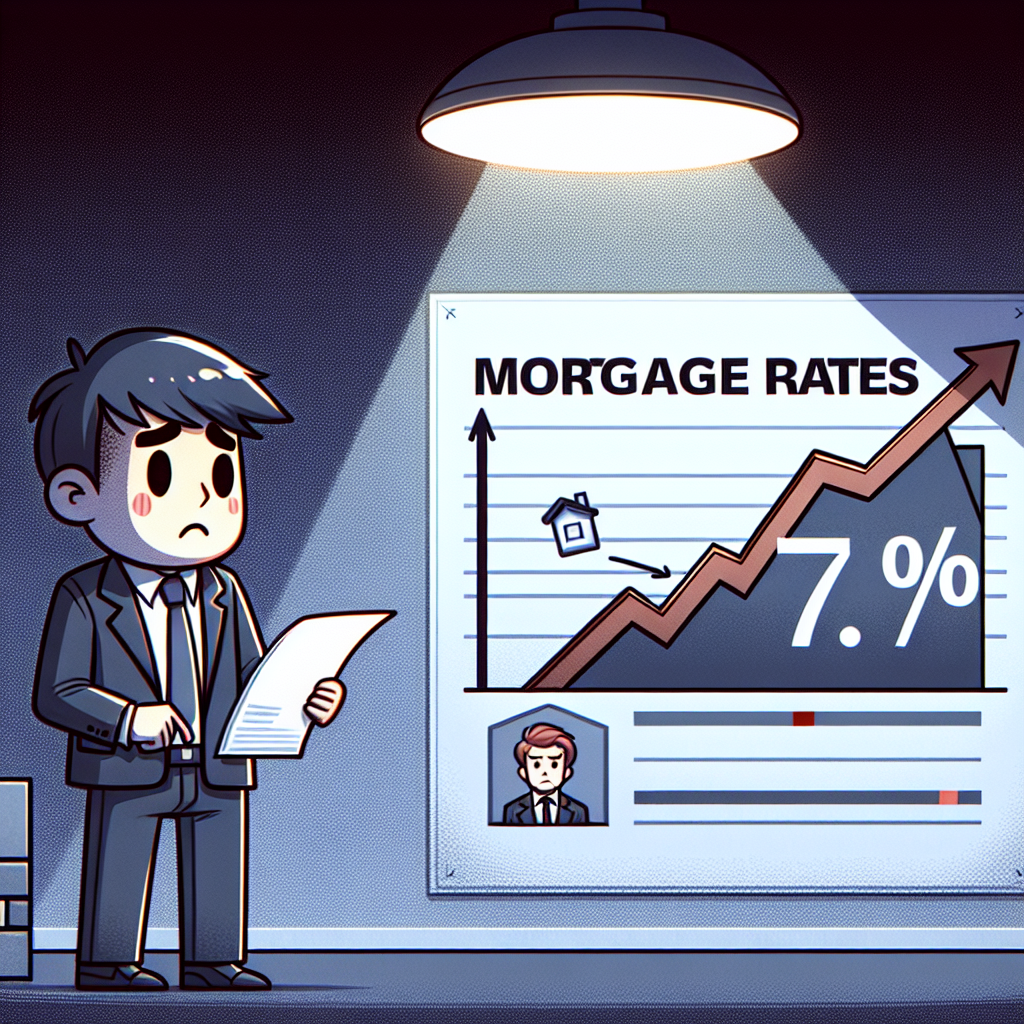Mortgage Rates Surge to 7% Amid Powell’s Hesitation on Rapid Rate Cuts
In recent months, the financial landscape has been marked by a significant surge in mortgage rates, reaching a staggering 7%. This development has sent ripples through the housing market and the broader economy. At the center of this financial storm is Federal Reserve Chairman Jerome Powell, whose cautious approach to rapid rate cuts has sparked both debate and concern. This article delves into the factors driving this surge, the implications for various stakeholders, and the potential future trajectory of mortgage rates.
The Rise of Mortgage Rates: A Closer Look
The increase in mortgage rates to 7% is a result of a complex interplay of economic factors. Several key elements have contributed to this upward trend:
- Inflationary Pressures: Persistent inflation has been a major driver of rising mortgage rates. As the cost of goods and services continues to climb, lenders are adjusting rates to mitigate the risk of inflation eroding the value of their returns.
- Federal Reserve’s Monetary Policy: The Federal Reserve’s decision to maintain a cautious stance on rate cuts has played a pivotal role. By not aggressively reducing interest rates, the Fed has signaled its commitment to controlling inflation, indirectly influencing mortgage rates.
- Global Economic Uncertainty: Ongoing geopolitical tensions and supply chain disruptions have added to the uncertainty, prompting lenders to adopt a more conservative approach in setting mortgage rates.
Impact on Homebuyers and the Housing Market
The surge in mortgage rates has profound implications for homebuyers and the housing market as a whole. Prospective buyers are facing increased financial burdens, while sellers are witnessing shifts in market dynamics.
- Affordability Challenges: Higher mortgage rates translate to increased monthly payments, making homeownership less affordable for many. This is particularly challenging for first-time buyers who may struggle to meet the financial requirements.
- Cooling Housing Market: The rise in rates has led to a slowdown in housing market activity. With fewer buyers able to afford homes, sellers are experiencing longer listing times and may need to adjust their pricing strategies.
- Shift in Buyer Preferences: As affordability becomes a concern, buyers are increasingly looking for smaller, more affordable homes or considering alternative housing options such as renting.
Powell’s Cautious Approach: A Double-Edged Sword
Jerome Powell’s reluctance to implement rapid rate cuts has been met with mixed reactions. While some applaud his focus on long-term economic stability, others argue that a more aggressive approach could alleviate immediate financial pressures.
- Pros of Caution: By maintaining a steady course, Powell aims to prevent runaway inflation and ensure sustainable economic growth. This approach prioritizes long-term stability over short-term relief.
- Cons of Hesitation: Critics argue that the lack of rapid rate cuts is exacerbating financial strain on consumers and businesses. They contend that a more proactive stance could provide much-needed relief to the housing market and stimulate economic activity.
Looking Ahead: The Future of Mortgage Rates
The trajectory of mortgage rates remains uncertain, with several factors influencing their future direction. Key considerations include:
- Inflation Trends: If inflationary pressures persist, mortgage rates may continue to rise. Conversely, a successful containment of inflation could lead to rate stabilization or even reductions.
- Federal Reserve Actions: Future decisions by the Federal Reserve will be closely watched. Any shifts in monetary policy, including potential rate cuts, will have a direct impact on mortgage rates.
- Economic Recovery: The pace of economic recovery will also play a crucial role. A robust recovery could support lower rates, while ongoing challenges may necessitate higher rates to manage risk.
Conclusion: Navigating the Mortgage Rate Surge
The surge in mortgage rates to 7% amid Jerome Powell’s cautious approach to rate cuts presents both challenges and opportunities. While the immediate impact on homebuyers and the housing market is significant, the long-term implications depend on a range of economic factors. As stakeholders navigate this complex landscape, a balanced approach that considers both short-term relief and long-term stability will be essential. Ultimately, the path forward will require careful monitoring of inflation trends, Federal Reserve actions, and broader economic conditions.



